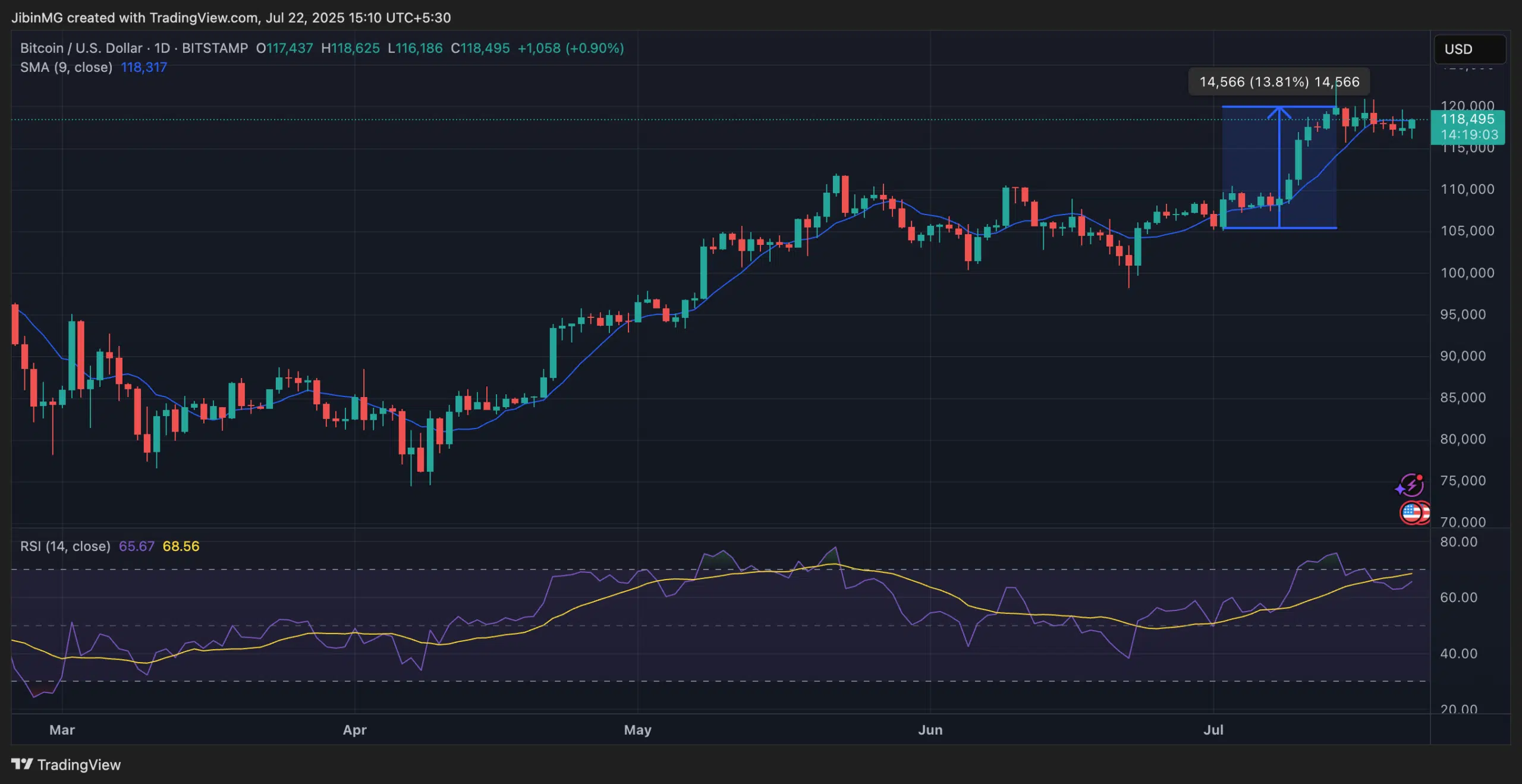3 reasons why Bitcoin could cross $200,000 in 2025

The chatter about Bitcoin to $200,000 is getting louder. It sounds crazy, but you can’t ignore the perfect storm brewing. We’re seeing a collision of old patterns, new money, and global chaos that might just launch Bitcoin into a whole new league. It’s not just a guess; there are real, tangible reasons why the next year or so could be its most explosive yet.
This isn’t just about hype. We need to look at what’s actually happening. From its predictable four-year pulse to the Wall Street giants now playing in its sandbox.
We’ll also face the hard truths about what could stop this rally in its tracks.
It’s supposed to follow a script, but this time is different
For years, you could almost set your watch to Bitcoin. It followed a four-year beat, all tied to an event called the “halving.” This is when the new supply of Bitcoin gets chopped in half, creating a scarcity shock that historically kicks off a wild price climb.
The old playbook had four acts,
- The Lows – After a huge crash (think 80% drops), the price would flatline. Nobody seemed to care except the die-hards and big players who were quietly buying.
- The Climb – Slowly, the market would wake up. Prices would start a steady march upwards, and optimism would creep back in.
- The Mania – Things would go vertical. Everyone and their grandmother would be talking about Bitcoin, driven by a fear of missing out. This is when the early birds would sell to the newcomers.
- The Crash – The bubble would pop, prices would plummet, and the whole cycle would get ready to start over.
In just over a year since the last halving, Bitcoin hit a new record price of over $120k on the price charts. How so? Well, Spot Bitcoin ETFs are one solid reason.
In January 2024, the United States gave them the green light, and a firehose of money from big-time investors was turned on, completely upending the old supply and demand game.
Wall Street has arrived, and they’re changing the rules
The story of this Bitcoin rally is really the story of suits and ties finally joining the party. The new ETFs created a safe, regulated way for a whole new class of investors to buy in, and it has changed everything.
Firms like BlackRock and Fidelity are now holding massive amounts of Bitcoin for their clients. This isn’t just money sitting on the sidelines; it’s actively shaping the price. The action has moved to places like the Chicago Mercantile Exchange (CME), where professional traders use complex financial tools to bet on its future.
You can see this “smart money” at work by looking at the growing bets on the CME. Sure, it can make things choppy, especially when contracts expire. But the bigger picture is that these players have deep pockets and are in it for the long haul.
They’re less likely to panic-sell at the first sign of trouble, which could mean future downturns are less brutal than the ones we’ve seen before.
It’s not just digital gold anymore
The idea of Bitcoin as a hedge against inflation—a sort of “digital gold”—is still a huge selling point. But that’s not the whole story. Under the surface, a quiet revolution is making Bitcoin useful for more than just sitting in a wallet.
- The Lightning Network –This add-on technology is making small, everyday Bitcoin payments fast and cheap. It’s slowly gaining ground for things like online tipping, cross-border payments, and e-commerce.
- Ordinals and BRC-20s – A new, and somewhat divisive, innovation called Ordinals has allowed people to create things similar to NFTs and other tokens directly on Bitcoin. Love it or hate it, it’s caused a spike in network usage and fees, which is vital for paying miners to keep the network secure as the automatic rewards fade.
- New Platforms – Projects like Stacks are working to bring complex apps and decentralized finance (DeFi) to Bitcoin, aiming to build a full-blown financial system on top of the world’s most trusted blockchain.
This is a big deal. When Bitcoin can do more, more people and businesses need it, making it valuable for its utility, not just its scarcity.
A safe harbor in a messy world
Bitcoin’s place on the global stage is getting harder to ignore. As economies wobble and political conflicts flare up, its core features—being decentralized and beyond any government’s control—make it a uniquely attractive asset.
- In countries where the local currency is collapsing, like Argentina, Bitcoin has become a financial lifeboat for ordinary people trying to save their money.
- Its nature allows it to bypass the traditional banking system, which means it can be a tool for political activists or a way for nations to sidestep economic sanctions—a fact that has not gone unnoticed by world powers.
- The idea of countries and big companies holding Bitcoin in their reserves, once a fringe concept championed by companies like MicroStrategy, is now a serious conversation. It’s seen as a smart hedge in case traditional currencies lose their value.
What could go wrong? Risks are real!
A run to $200,000 is far from guaranteed. There are plenty of things that could throw a wrench in the works.
- The Government Hammer – Regulations are still a messy, unpredictable patchwork around the world. A harsh crackdown from a major country like the US could instantly put the market on ice.
- Crypto’s Own Demons – The industry can still be its own worst enemy. The implosion of FTX was a brutal reminder of the fraud and incompetence that can hide in plain sight. The stability of major assets like the stablecoin Tether is always a background worry.
- A Global Economic Crash – Bitcoin isn’t totally immune to the wider economy. If a major recession hits, investors might dump “risky” assets like Bitcoin and run for the hills, seeking the safety of cash.
Tying it all together for 2025
When you mix the programmed supply cut from the halving with the flood of new money from ETFs and Bitcoin’s growing list of real-world uses, you have a powerful argument for a massive price jump in 2025. Looking back at past cycles, the market peak usually hits about a year to a year and a half after the halving. That timeline points to a potential top somewhere in the latter half of 2025.
Price models are never perfect, but they can give us a rough idea. Even if you toss out old favorites like the Stock-to-Flow model, other projections tracking Bitcoin’s long-term growth suggest that $200,000 isn’t as outlandish as it sounds.
In the end, it all comes down to whether the big money keeps flowing in. If the wave of cash from wealth managers, pension funds, and maybe even nations continues, it could easily swallow up the dwindling new supply of bitcoin and send its price to places we’ve never seen before.
The ride will be a rollercoaster, no doubt about it, but the engine for a $200,000 Bitcoin looks more powerful than ever.







